In healthy economic times, the focus is on getting more business. Getting more eyeballs on your products and sell, sell, sell! But the old saying “revenue cures all ills” can suddenly bite you in the behind when revenue slows down.
In economic downturns you cannot afford the luxury of letting inefficiencies go unaddressed. And, it appears we may be in for another rough year ahead. As of Q3, the National Bureau of Economic Research (NBER) reports that the U.S. is not in a recession despite two consecutive quarters of negative economic growth. Typically, two successive quarters of negative growth are considered the definition of a recession.
While economists maintain a mix of opinions, most seem to be flagging 2023 as a down year. The Federal National Mortgage Association (Fannie Mae) predicts 2022 economic growth to end the year at 0.1% and 2023 at -0.4%. Steve Hanke, Professor of Applied Economics at Johns Hopkins University, fears it will be even worse. Hanke told CNBC that we’re in for a “whopper” of recession next year.
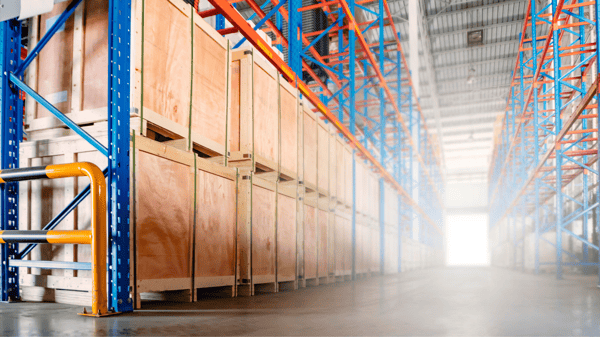
Freight Volume and Recession
2023 Predictions
Cargo Spectre CEO Jason Joachim also tips his hat to a recession, saying:
"A recession is on the horizon if not already upon us. On the retail side, you have major retailers that have excess inventory (every Target store is 30% off right now). Until inventory is offloaded, this will weigh heavily on freight volumes worldwide. On the shipper side, shipping rates have been elevated for over two years. These rates are propped up due to shortages in supply."
Joachim adds that freight-scan volume has also been decreasing:
"A crash is inevitable with rates that are decoupled from demand."
Falling freight prices aren’t solely due to decreasing demand, however.
Jake Peters, Co-Founder & CEO of Meramec Solutions, explains:
"Flashback to the beginning of the pandemic, hiring practices for carriers were upended. The driver shortage made hiring pre-pandemic challenging, throwing in remote hiring and drivers quitting in droves because of vaccine requirements, and hiring became nearly impossible.
Carriers have had a difficult time keeping their fleets filled, meaning there were fewer carriers capable of fulfilling loads This increased the demand and companies were forced to pay higher rates to the few carriers fully staffed. Now that we are further away from the pandemic, carriers as a whole have been able to increase hiring. More carriers are available to fulfill spot rates, decreasing demand for their services and lowering prices."
Peters says high-volume shippers, retailers, and logistics ops should expect shipping rates to decrease but will ultimately normalize.
Freight Demand and Owner-Operator Predictions
Kyle MacDonald, Director of Operations at Force by Mojio, sees the current trajectory remaining in place for 2023:
"While it's true that demand for freight is down, it doesn't mean it's necessarily going to reach actual recession levels. While it's not bounced back to before-pandemic levels because of the current inflation, it's still predicted to maintain the current trajectory through the rest of this year."
MacDonald also says that any of the new owner-operators that have started because of increased pandemic demands might end up working for larger carriers instead of independently until things normalize. This may reduce the number of carriers that bid on loads.
At the same time, however, some carriers without dedicated contracts are struggling to find freight. According to Andrew Lynch, CEO of Zipline Logistics:
"Volumes and tender rejections are trending down and rates have decreased 20-25% since last quarter."
While Lynch sees volumes and capacity balanced now that some of the significant labor shortages have been resolved, he says shippers will continue to deal with delays.

We’ve all dealt with significant supply chain issues over the past few years. Most of the time, we’ve been operating in crisis mode, trying to fulfill orders and keep customers happy. As a result, many companies find that their supply chain process and department costs have gotten somewhat out of control. In downturns, you’ve got to clean up the mess, streamline processes, and get your house in order.
Many companies amassed significant amounts of inventory in the healthy market we’re coming out of. As sales slow, many more products take up shelf space. As such, we’re seeing massive warehouse and distribution space shortages.
Lynch adds:
"Retailers are dealing with insane amounts of overstock right now, as consumer mindsets shift away from purchasing consumer goods."
Shippers are finding it necessary to locate short and mid-term overflow warehousing, and they’re often paying massive premiums on top of the cost of shipping goods to new locations. All this is causing logjams in warehouses, making them more inefficient and costly to operate.
Product, sourcing, routing, labor, and high freight costs hit the bottom line. CEOs and executives need to take action now to rein in supply chain costs and streamline processes to control costs. One way to get started is by evaluating your logistics tech stack.
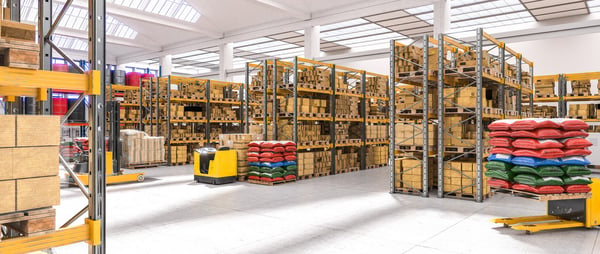
Leveraging Technology
As times get leaner and fewer products are in circulation due to reduced consumption, how do you control your costs and do more with less? Leveraging technology is an obvious way. You'll want to ensure you have the most efficient tech stack to streamline and automate processes. A good place to start is to evaluate your:
- Accounting software
- CRM
- Self-service tools
- Lead gen software
- Company website
- Retail platform
Accounting Software
The right accounting software allows you to simplify the process of recording transactions, managing payables and receivables, collecting and paying taxes, and closing the books. You can save time and ensure accuracy by automating repetitive tasks, such as journal entries or reconciliation statements.
One solution is Oracle NetSuite accounting software, a secure cloud-based platform consolidating all your financial reporting into one platform. It features real-time visibility, robust process automation, and forecasting tools.
Customer Relationship Management Software
Optimizing your Customer Relationship Management (CRM) software is a must. Automation can save time and help you target customers more efficiently and at scale.
You can automate:
- Marketing
Make use of autoresponder emails, text messaging, and cross-platform data management. - Sales
Automate daily task flow, funnel tracking, lead assignments, and appointment scheduling. - Administration
Simplify invoicing, reporting, tracking, time management, and communication. - Customer Service
Streamline ticket routing, password resets, and AI-enhanced chatbots.

Self-Service Tools
Now is an excellent time to review how you use your CRM to increase automation. You also want to ensure you have self-service tools available for customers, including automating returns and reverse logistics, answering common questions, and troubleshooting.
When customers are asked what is the most important attribute that impacts the customer experience, more than three-quarters say it’s fast response times. Self-service tools allow customers to find the information they want themselves to handle things promptly while also reducing the workload for customer support teams. This allows them to handle customer queries more rapidly, 24-7.
Lead Generation Software
While some CRMs allow you to automate lead-gen functions, many organizations find significant benefits from adding lead generation, demand generation, and account-based marketing (ABM) software to their tech stack — especially for B2B sales. The right automation tools can:
- Scrape leads from sources such as LinkedIn or Facebook groups using a data extraction tool.
- Target and retarget consumers that have engaged with your website.
- Personalize your response (at scale).
- Score leads to improving lead quality and prioritizing sales activation.
Account-based Marketing for B2B sales lets you target high-value prospects to build trust and shorten sales cycles. The best ABM tools provide the rich data you need to align sales and marketing efforts to drive prospects through the buyer’s journey by targeting and nurturing qualified leads more likely to close.
Company Website
Now is also a terrific time to review your company website to ensure it is operating at peak performance. Conduct a review of your website to ensure you are deploying best practices designed to move buyers through the buying process.
Other crucial elements to review that help convert visitors are:
- Mobile-optimization
Despite the majority of traffic coming from mobile devices, about a fifth of retail sites still aren’t optimized for mobile. - Ease of Navigation
The easier it is for customers to find the product(s) or service(s) they are looking for, the easier it is for them to purchase. - Transparency
Today’s consumers want to know precisely what they’ll be getting and their total upfront costs. - Closing Options
Consumers also want diverse payment and shipping options.
Retail Solution
With shopping cart abandonment rates now averaging 70%, it’s crucial to ensure you employ best practices to complete sales.
The key reasons consumers do not complete purchases include:
- Long and confusing checkouts
- Having to create an account before purchasing
- Concerns about payment security
- Unexpected costs
Reviewing your checkout process can help find bottlenecks and improve your customers' experience in the check out process.

The more robust, accurate, and automated your process is, the fewer people you need to manage your shipping. Optimizing efficiencies within your shipping can result in significant savings by streamlining:
- Last mile delivery
- Fulfillment centers
- Carrier contract negotiations
- Holding carriers account/Auditing
A robust transportation management system (TMS) is key to making your technology and processes work more efficiently.
Tightening Last-mile Delivery
Last-mile delivery costs make up 53% of total shipping costs on average, so finding ways to tighten and reduce last-mile delivery costs can yield significant returns. Grand View Research also shows that the last-mile market is growing by nearly a third every year.
With increasing consumer demands for same-day and next-day delivery, last-mile costs may even be higher, and they’re not going away. 99% of retailers expect to process same-day delivery within the next few years, according to a 2022 study. Nationwide chains increasingly have regional and hub distribution centers, and many can handle the last mile with in-store fulfillment. Still, delivery often requires a third-party shipper and manual fulfillment — both are expensive and inefficient.
Changes are coming, too. For example, Target is building sortation centers to streamline same-day deliveries. Trucks will collect items from stores throughout the day, organize them at the centers by zip code, and then send them to delivery partners. Kroger is building fulfillment centers in San Antonio and Austin, markets it left years ago, and where it does not have physical stores.
Tightening last-mile delivery may require rethinking supply and fulfillment chains, as well as:
- Building a solid delivery network with broad diversification, including identifying new shippers and low-cost, high-quality shippers that can handle the last mile. Expanding your regional carriers, for example, can help protect against last-mile price fluctuations.
- Including zone skipping, which consolidates freight and shipping across multiple regions without stopping, taking them directly to local delivery destinations. This strategy helps reduce costs, speeds up delivery times, and replaces shipments having to be unloaded, sorted, and reloaded as they cross zones.
- Benchmarking shipping networks by checking competitive pricing and quality metrics, such as transit time, on-time delivery, and perfect-order percentage.

More Aggressive Carrier Rate Shopping
The right TMS automates the rate shopping process by allowing you to readily compare rates across multiple shippers to find the best parcel and freight rates. More robust shipping software allows you to mix and match carriers by adding or switching legs or service levels. FreightPOP’s Freight RateHACKER algorithm, for example, provides such functionality by looking at every possible shipping combination and giving you options that meet your budget and delivery timelines. The algorithm enables you to book loads with multiple carriers and cut shipping rates in half depending on the delivery date, which gives you additional bargaining power when contracting for loads.
Many companies are building out micro-fulfillment centers (MFCs) to serve retail stores. MFCs are typically between 10,000 and 30,000 square feet and housed in existing stores and warehouses.
MFCs are also highly automated to streamline workflow, requiring a robust TMS platform and tight inventory management controls. However, there are also ways you can streamline your warehouses and distribution centers rather than building them.
Greater Transparency
When evaluating operations at fulfillment centers, it’s crucial to dig into the details, from shipping turn-around times, fulfillment costs per order, and other vital metrics. While disruptive initially, many shippers have found cost savings by switching fulfillment partners or renegotiating leases. Today’s overflow inventory situation will ease, and warehouses and fulfillment centers will need to be more competitive in future.
You also want comprehensive tracking and reporting on every phase of your supply chain. Check out our Ultimate Supply Chain Visibility Guide for more ideas.
To maximizing value from fulfillment and distribution centers, assess the following:
- Fulfillment Alternatives
- Packaging and Branding
- Returns Management
- Supply Chain and Inventory Management
- How Contracts are Negotiated and Carriers Held Accountable
Looking at Fulfillment Alternatives
Evaluating 3PL options is also an avenue to potential cost savings. Providers such as the eHub Network are helping to connect shippers with vetted 3PLs and warehousing space.
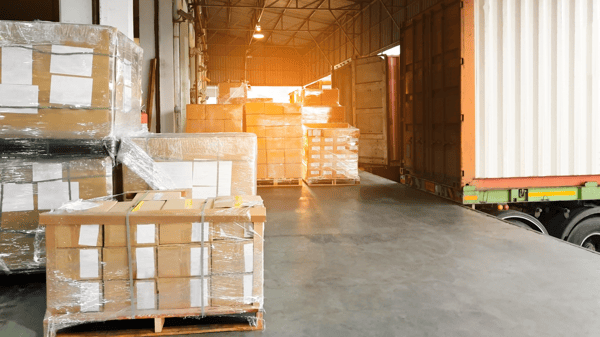
Revisit Packaging and Branding
It’s also worth revisiting your packaging and branding options. There are new options for packaging, including more eco-friendly options that may be more cost-efficient than what you’re doing now.
Evaluate Return Management
Consider outsourcing return management to reduce the workload of your in-house employees. Reverse logistics are time-consuming and expensive. By outsourcing this function, you can relieve the burden on your team and often reduce administrative costs.
Better Supply Chain and Inventory Management
When Covid impacted supply chains, causing severe delays and stockouts, many companies ordered extra to accommodate long lead times, especially for ocean shipping. Often, these orders did not factor in warehouse or fulfillment center capacity issues, which led to overflow inventory and tied up significant amounts of cash.
Aggressive supply chain and inventory management are central to managing cash flow and fulfillment.
One key is integrating disparate software solutions within your tech stack for seamless integration. While some solutions offer native integration or APIs, you may need more robust connectivity to create the solution you need. Companies like Ariox help isolated software applications talk to each other so you can maximize workflow.
Negotiating Contracts and Holding Carriers Accountable
Now is the time to negotiate forward-looking contracts with carriers. While rates are on the decline, it may be possible to forge better deals that produce savings when rates normalize.
Lynch advises to keep in mind:
"Some small carriers have had to close up shop temporarily because they are only breaking even on loads."
Others have switched from being owner-operators to working as company drivers in the interim.
These changes may open up opportunities to negotiate, especially for high-volume shippers. Carriers need to keep their trucks on the road to generate consistent revenue, so contracts are attractive to lock in profitability and maintain cash flow in a down market. By analyzing historical data such as volume and rates using supply chain analytics, you can create attractive RFPs for carriers while maintaining the rates you need.
Different shipping methods may also be available. Some modes of shipping can reduce your costs and still provide the results you need. For example, optimizing shipping costs by using a mix of shipping methods can save money in many cases. A deep dive into your data can analyze costs by mode to determine potential operational efficiencies.

Freight Optics CEO Brad McBride says it’s important to diversify your carrier mix to provide you with more flexibility and capacity:
"Now, maybe more than ever before, it’s important to take a look at diversifying your carrier portfolio. Utilizing multiple carriers at both the national and the regional level can set you up to best navigate the congestion and delays."
Shippers can also negotiate other fees, such as fuel surcharges and accessorial fees.
It’s also an excellent time to conduct freight audits to ensure you’re not overpaying for shipping.
Vik Pearce, Vice President at Intune Logistics, says:
"Carriers often make their contracts hard to understand. For example, they might charge extra fees for residential delivery when it went to a business address-- something no accounts payable clerk would know to look for. By automating freight audits and comparing every line item in every invoice to the contract, such accessorial problems are caught, and shipper freight spend is reduced."
Automating the auditing process can streamline processes and often recover significant oversights, including overcharges, duplicate charges, and weight discrepancies that otherwise go unnoticed, according to Reveel Group.
Not only can these insights help you save money, but they may provide the data you need when negotiating new contracts.

Your TMS is central to optimizing your operations and managing your costs effectively. Today, cloud-based TMS solutions have streamlined and automated processes to dramatically ease workflow challenges. For example, major online retailer NewEgg reduced its shipping costs by more than half by migrating to a more modern TMS solution.
You can maximize your TMS by leveraging its deep insights and automation capabilities to:
- Shop for the best rates across carriers rather than email or logging in and out of carrier websites.
- Track every inbound, outbound, and multi-leg shipment in real-time.
- Find hidden freight savings with carrier invoice auditing.
- Generate reports that can uncover ways to optimize operations and negotiate better.
Cloud TMS and Automations
You can save considerably on implementation and infrastructure costs by using a cloud-based solution rather than licensing on-premises software. Cloud platforms allow you to log in from wherever you’re working rather than being limited to a specific computer or an on-site network.
You should also search for a TMS platform that provides a wide range of automation to reduce your workload and uncover hidden savings.
Learn more about how to shop for a TMS in our article, 9 Questions to Ask When Buying a Transportation Management System.
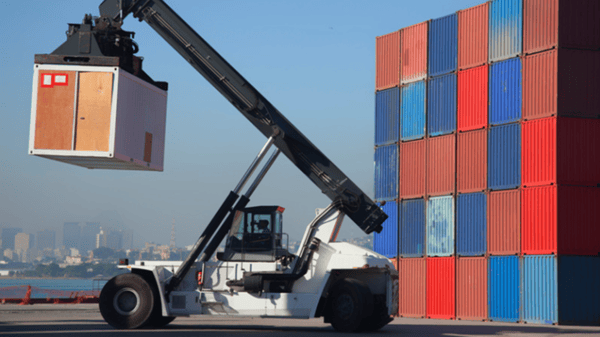
How This Helps You Do More With Less
Ultimately, leveraging technology can truly help you do more with less. With a potential recession on the horizon, tech may be the solution to tighter cost control and operating efficiently even with a reduced workforce.
Operating efficiently helps you manage two of your biggest cost centers: shipping rates and time. The average heavy shipping customer moving to FreightPOP’s cloud TMS sees a savings of 20% on their shipping rates and at least a 15% reduction in the time it takes to process orders and audit processes. Most customers see a 35% reduction in overall costs.




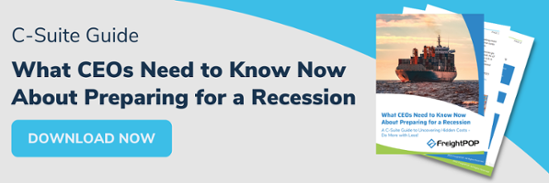
.png?width=600&name=unnamed%20(1).png)